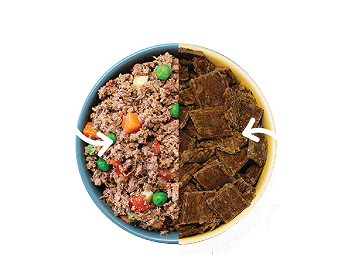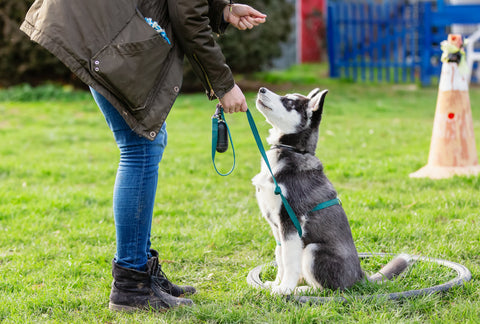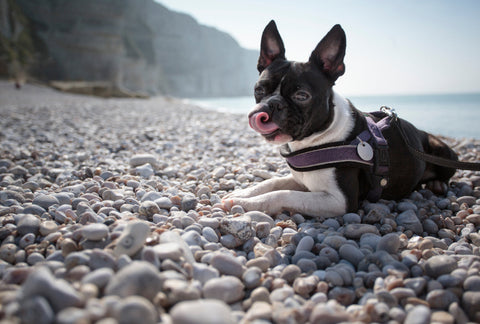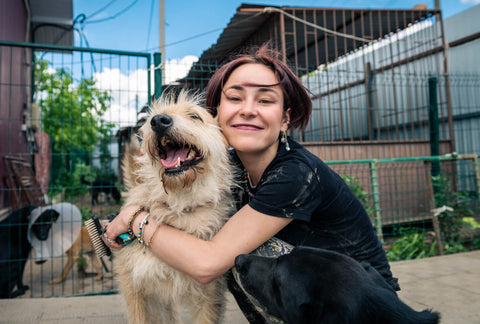
My dog wants constant attention … help!
Of course you love your best canine pal. There are so many times when you’re happy to give your dog all the time and attention in the world. When you’re ready to cuddle them up, give them a belly rub, or take them out to play.
But then, there are other times when you just … need … to get … some work done. And that’s when your dog starts up some attention-seeking behaviors that are pretty tough to ignore. Right?
Maybe it’s counter surfing, or attention-seeking barking that’s driving you nuts. Sometimes, attention-seeking behaviors in dogs get so annoying or disruptive, you may be at your wit’s end to find a solution — fast.
We hear you. If you’re seeing signs that your dog wants attention and is displaying behaviors that aren't so fun for you, follow these creative and easy tips to help keep Fido not only well-behaved, but also entertained and engaged.
Step 1: Understand your dog’s motive
The first step to any training, of course, is understanding. What is your dog’s motive for these behaviors? Your pup isn't likely to be naughty just to spite you. Just like a kid, your dog is trying to get your attention in the best way they know how.
And just like a kid, even negative attention is attention. That’s why so many dogs start misbehaving for attention just when you’re the most busy with other things. They know they aren’t supposed to eat people food, or dig, or bark their heads off.
But when your dog is feeling isolated, lonely, or ignored that tasty sandwich left too close to the edge of the kitchen counter, that fresh garden bed just ripe for digging, or the possibility of strangers in the street become way too tempting.
When signs your dog wants attention appear in the form of misbehavior, identifying motive can help you find ways to correct your pup, re-focus their energy, keep them engaged and learning, and most importantly, receiving positive attention from you!
Step 2: Avoid yelling “NO!”
When your dog is demanding attention, do your best to avoid yelling a blanket "no!" Why? It's not as communicative as something more specific like "leave it" or "gentle." If everything your dog does gets the same response, they never get the chance to learn how to get into your good graces.
Tailor your response to the specific situation. If your dog tends to counter surf when you are busy with other things, try using an "off" command, like "leave it." Meanwhile, attention-seeking dogs that bark could benefit from a re-directive command like "sit" or "lay down” to help them focus energy into more positive behaviors.
Step 3: Watch for your chance before behavior begins
Though we like to think that our pups know better, dogs do what is rewarding. This is why we use positive reinforcement and high-value rewards to help teach them that behaving well is more rewarding than not.
Removing any temptation for your pup to behave poorly is helpful. But it’s impossible to remove all temptations — that’s why to catch attention-seeking behaviors in dogs, you need to watch for your opportunity to provide training in a tempting setting BEFORE your pup misbehaves.
Step 4: Specifics for counter surfers
If you have a counter surfer, it wise to keep watch over your most important foods — for example, your Thanksgiving turkey or the birthday cake you just worked so hard to make. It’s also a good plan to always keep food and sharp items out of reach, in case your pup decides to see what’s going on up there in the kitchen.
Counter surfing can be a difficult behavior to crack, because it’s tricky to anticipate when it will occur — and of course, your dog finds it delicious. Start by becoming aware of when tempting kitchen smells like a juicy sandwich or chicken leg lure your dog closer.
Watch your dog for the right time to train. Standing super still and air scenting are two good clues that your pup may be considering a little counter-surfing. Work with whatever your "off" or "leave it" command is, and reward your pup when he or she opts not to stand up to check out the countertop.
Keep it going by rewarding your dog for more positive behavior. Try telling your dog to “sit” and offering a treat. If your kitchen timer allows, take a break and to give your dog a scratch or some playtime.
Step 5: Tips for attention-seeking barkers
If you've got an attention-seeking dog that barks, yelling "no" isn’t going to help. Think of it from your dog’s point of view — they are having fun making noise, and now you’re making noise, too!
Yelling “NO!” is not only unlikely to signal to the dog that what they are doing is disruptive, you may as well be barking with them! In that light, your “NO!” could feel like a positive to your boisterous pup. They've gotten your attention, haven't they?
A clever way to avoid confusing your pup into thinking that barking has successfully gotten them the attention that they wanted, try re-directing their energy into something positive that builds better habits.
Using a command like "sit" or "lay down," is a great place to start. This re-direction into a positive, skill-building exercise provides a rewarding place to put your pup's energy. Then, you can positively reward good behavior rather than punishing the barking.
Step 6: Be patient and positive
When counter-surfing or attention-seeking barking happens, it's super important to stay positive. If you keep a watchful eye out for opportunities, there will be another chance for you to intervene BEFORE your dog’s bad behavior begins.
Remember to use only positive reinforcement training to reward your pup for a good behavior, rather than punishing them for bad behaviors. This should help teach them that staying off of the counter, and channeling their energy away from barking, is more rewarding for your dog than misbehaving for attention.
If attention-seeking behaviors in your dog continue to worsen, consider that your dog may have something bothering them. Just like us, dogs use behaviors to communicate with us how they are feeling.
Your dog may be trying to tell you about anything from hunger to boredom, frustration, fear, anxiety, and/or excitement. Take care to observe how they react to certain situations, and see if behavior can't be mitigated by adjusting your dog’s lifestyle.
Changes you can easily try might be different walk times, different meal times, puzzle-solving toys, games that help engage hunting instincts, and of course, the removal of certain behavior triggers that your dog can’t seem to resist.
It’s ok to ask for help
Before you reach your wits end with your dog’s attention-seeking behaviors, remember that you don’t have to go it alone. Consulting a dog behaviorist and/or trainer can be beneficial.
Remember to interview any behaviorist or trainer thoroughly. Be sure to ask whether they use positive reinforcement training only. Also be sure that they work with you and your dog together, instead of just taking your dog for training sessions.
Remember, your dog isn’t demanding attention to be a nuisance. It may be that your dog needs more from you in the form of focus, more interesting food or toys, more exercise, or more outdoor play.
Behavioral issues come from both sides of the dog-and-parent relationship — it's a two-way street. Working together, you can solve it and end up happier and healthier with your pup.
Top Stories
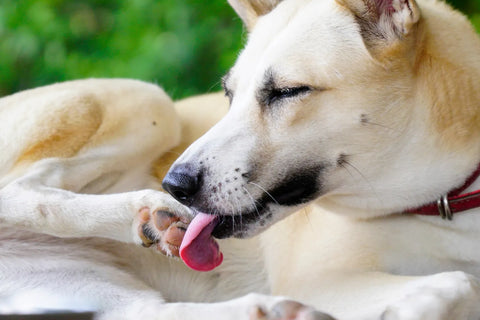
Why Do Dogs Lick Their Paws?

Why Do Dogs Whimper & Make Noises in Their Sleep?

Healthy Vet-Approved Homemade Dog Food Recipes

How To Cook Sweet Potatoes for Dogs

















